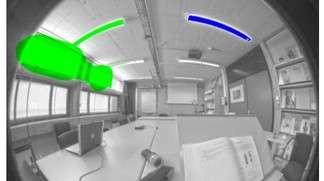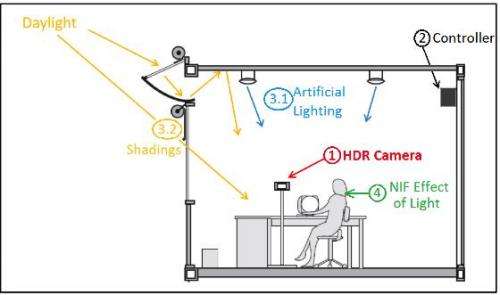Light that adapts to your needs through the eye of a camera

EPFL researchers have developed a camera that sees like the human eye, providing clues about the sensation of visual comfort. The instrument could optimize natural and artificial lighting to constantly adapt to the needs of the user.
How can we combine visual comfort with electrical energy savings? Light inside the home is a theme that has interested researchers for over a half century. The teams of the Solar Energy and Building Physics Laboratory (LESO) addressed the issue from a completely new angle: through the lens of a video camera capable of perception like the human eye. This is a first in the measurement of visual comfort.
LESO researchers have given the power of the human eye's visual perception to a wide dynamic range camera (high-dynamic-range). This camera, with its broad field of vision and its ability to capture many different levels of light intensity, was the starting point of the researchers' work. By equipping the camera with special filters developed in their lab, the researchers were able to use it to measure visual comfort indexes that express the visual discomfort of a human being through radiation levels. Work on the camera was carried out in close collaboration with the Swiss Center for Electronics and Microtechnology (CSEM) in Neuchâtel.
"One of the problems encountered in this first step is that we could not accurately and automatically measure visual comfort indexes," says Ali Motamed, PhD student in charge of the second phase of the project. Motamed is currently developing an experimental tool to measure and calculate, in near real-time, all data collected by the camera, which is currently being miniaturized at CSEM. The camera is also capable of detecting whether a person is in its field of view. To perceive a person's work environment, the camera can be placed on a computer screen or directly integrated into a pair of smart-glasses.

In parallel, their digital eye will open new avenues of research, such as into the effect of light on the moods and cognitive abilities of people who work in offices, in terms of their own circadian rhythms. "We know that a certain light intensity is necessary to promote alertness and productivity in people. It's a challenge to combine that with the concept of saving energy." To respond to this dual expectation, Motamed will play with all available light sources, natural and artificial, according to the time of day and an individual's location.
Further down the road, this technology will be able to recognize the visual preferences of its users, and even guess their location to optimize lighting conditions and the quality of their indoor environment.

Provided by Ecole Polytechnique Federale de Lausanne





















